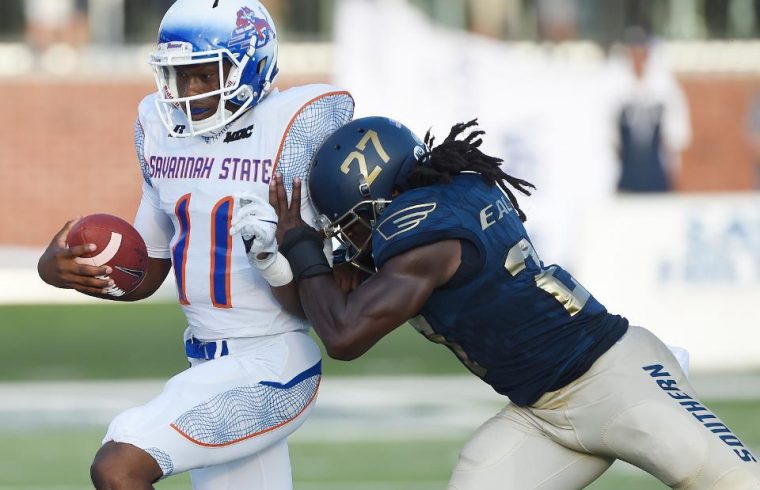Waking up and finally smelling the coffee while realizing the fruitlessness of trying to be something they are not, The Savannah State University Tigers intercollegiate athletic department has announced it is beginning the process to reclassify all its athletics programs from NCAA Division I to NCAA Division II along with giving up its membership in the Mid-Eastern Athletic Conference (MEAC). The Tigers previously resided in Division II prior to moving up to the highest level (in all non-football sports) in 2002. This will likely make their sports teams more competitive on a national scale, albeit on a lower level of competition, but as I will go into below, it will not matter for Savannah State and schools like it who may choose to follow this better path. In fact, it may actually help them both athletically and as an institution to be at a level they can compete and be successful.
A Checkered Athletic History at Best
Savannah State University made the decision to move from Division II to Division I in 1998, while opting to leave the Southern Intercollegiate Athletic Conference (SIAC) and become independent of conference affiliation. SSU played its first season as a Division I institution in 2002 when the NCAA granted the Tigers full membership. The Tigers then became members of the MEAC in the fall of 2010 where they spent six seasons. The MEAC is a Division I basketball conference but plays Division I-FCS football.
Let’s look at what Savannah State has accomplished in Division I in the two marquee sports of football and men’s basketball, in what is candidly a sub-par conference athletics-wise even with football being classified in the FCS. The Tiger men’s basketball team only had three above-.500 seasons in its 15-year Division I run. Their best year was its first year when the Tiger men’s basketball team won 21 games during their first year after playing the previous nine seasons as an independent. The also won the MEAC regular-season title that season, but haven’t finished above .500 since the 2012-13 season. As for football, the Tigers will move forward with a reduced budget. Division II schools can offer a maximum of 36 football scholarships, whereas FCS programs can give 63. Savannah State played in the Southern Intercollegiate Athletic Conference for 29 years before moving up to D-I. That could become the school’s league again as they transition.
To this move towards a lower athletic division, I say simply Bravo! It is refreshing to see a university and a university president that has the guts to realize that pursuing NCAA Division I sports membership in name only is simply fool’s gold with little to any return on investment. What’s that you say? You did not realize Savannah State was even Division I? Don’t worry most everyone did not know that either. This is not to disrespect SSU, but let’s be clear they were not going to beat Alabama, much fewer schools in their FCS football Division like North Dakota State anytime soon. So the question remains: why do so many lower resource schools even try to do it? What is the return on investment, the benefit to academics, the school at large and what is the eventual end game (pun intended) of playing in Division I with no hope of succeeding even on an occasional basis?
In reality, schools like Savannah are not real NCAA Division I programs when you compare budgets, facilities and winning history. Sadly Historically Black Colleges and Universities (HBCU’s) are so under-resourced, trying to justify funding athletic programs at a much too high level can jeopardize the safety of the athletes due to inadequate resources and facilities. Most will play in “money games” that are large guaranteed payments from higher resourced schools for football and basketball games just in an attempt to balance the books. This presents a very real competitive integrity issue and can hurt the health and welfare of the athlete. In essence, schools like Savannah State are not competitive on the Division I level in almost any sport. Conferences like the MEAC have collectively won only one or two NCAA men’s basketball tournament games in their history and many cannot even stage full conference tournaments because of continual NCAA academic sanctions on multiple schools. Combine this with the lack of ability to provide adequate academic resources, it does not take too much to see this is a battle that many should not fight and join Savannah State’s path sooner rather than later.

